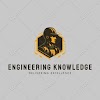Advertisement
This primer compares the operating principles, energy consumption, efficiency, and system parameters of these two pump designs.
Many times, you may be faced with the decision to use a reciprocating pump or a multi-stage centrifugal pump for a given application. There are some pros and cons for either pump design,depending on:
Advertisement
- Where the pump is to be installed
- The fluid being transferred
- Future expansion plans
- Variable system parameters
- Operation and maintenance issues
- Personnel knowledge and experience with the pumps
1. Operating Principles
- A centrifugal pump adds kinetic energy to a fluid by means of fast-rotating impellers. There is no fixed volume, and the fluid increases in kinetic energy (velocity) while moving through impeller passages by centrifugal force resulting from impeller rotation.
- A reciprocating pump utilizes a crankshaft connecting rod mechanism to identical to internal combustion engine. The crank shaft connecting rod mechanism converts the rotary movement of the crankshaft to a reciprocating linear movement of plungers or pistons. The plunger/piston movement creates volume changes.
2. Capacity and Head (Pressure)
- Since a centrifugal pump has no fixed volume (as indicated above) at a fixed inlet size and casing, increasing the diameter of the impeller or the rotational speed will lead to increased head and increased flow rate.
- Reciprocating pumps produce a fixed discharge volume for each crankshaft rotation, regardless of the fluid being pumped. Increased capacity can be achieved by increasing the plunger/piston diameters or increasing the rotational speed of the crankshaft (energy consumption increases as well).
3). Efficiency
Centrifugal pump
Volumetric efficiency loss is due to leakage in the impeller-pump casing clearance.
Hydraulic efficiency loss is caused by: a) shock loss at impeller eye due to an imperfect match
between inlet flow and impeller blade entrances and turbulence; b) friction loss in impeller blade
passages; and c) circulation loss due to imperfect match at the exit side of the impeller blades.
Mechanical efficiency loss is the result of mechanical friction in bearings, support bushings,packing gland, and other contact points in the machine.
Reciprocating pump:
Volumetric efficiency loss is induced by
slippage through valves, ratio of liquid
chamber volume at end of stroke to plunger/piston displacement volume, and
liquid compressibility.
Mechanical efficiency loss occurs while
overcoming mechanical friction in bearing
and speed reduction.
4). Pump Characteristics
A centrifugal pump consists of an impeller rotating within a casing. Liquid directed into the center of the rotating impeller is picked up by the impeller vanes, accelerated to a higher velocity by the rotation of the impeller, and discharged by centrifugal force into the casing and out the discharge.
The reciprocating pump does not generate head. Instead, the pump converts rotating motion and
torque into linear motion and force generating variable flow at the discharge connection.
The system's resistance to flow generates head. Hence, the pump will draw upon available power and energy until it overcomes all flow
resistances downstream. If excessive flow
restrictions exist, the pump can be over
pressurized, and the driver may stall or the
weakest link in the system can fail.
Therefore, it is imperative that a safety relief
valve is installed in the system.
5). Maintenance:
Centrifugal Pump Usually maintained components are fluid end parts and shaft packing or mechanical seals. Some of these items are field repairable, but often companies will send the equipment to an authorized repair facility for maintenance or overhaul. Because of tight tolerances and fast rotating assemblies, most designs do not accommodate fluids laden with solids, which could accelerate wear.
Reciprocating Pump Plunger packing, plunger (piston on piston pump), and suction/discharge valves are expendable parts in a reciprocating pump. They are field repairable. A trained mechanic can perform the job easily. The frequency between change outs depends on pump speed, materials used, and fluid
pumped.





0 Comments